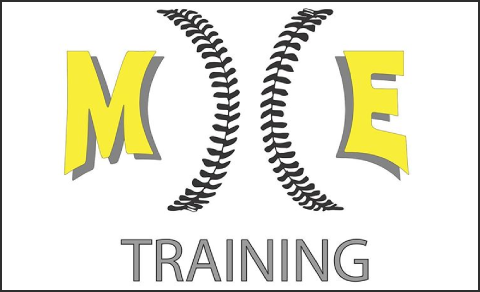It’s hard to fathom exactly how clutch Mike O’Reilly was during the 2012 Suffolk County Class A postseason run.
The Shoreham-Wading River RHP/3B was a force of nature. He hit walk-off home runs against Rocky Point and Sayville, with the latter HR coming with the team trailing 1-0 in extra innings. He had another game in which he crushed a bases-clearing double to stave off elimination.

On the mound, he was just as dominant. The hard-throwing righty fired 22 consecutive shutout innings including a 10 inning shutout in the Class A Long Island Championship against Tyler Manez and Plainedge. Their magic would finally run out in the 11th inning when Plainedge put up a three-spot to win 3-1 and head to the New York State tournament.
He captured the 45th Carl Yastrzemski Award, becoming the second player in SWR history to do so, following Keith Osik in 1987. For the season, he was 8-3 with a 1.24 ERA and 0.77 WHIP. He threw 84.2 IP with 141 strikeouts against only 46 hits. At the plate, he batted .467 with 17 doubles, 4 HR, 23 RBI and .789 SLG.
He credits much of that success to Osik, who was his hitting instructor.
![]()
“I would not be anywhere near the hitter I became if not for Keith Osik,” he said. He added that in all his years of playing baseball “those playoff games were the best games I’ve been apart of.”
Head Coach Sal Mignano, who won 583 games, built a powerhouse program from the ground up. Speaking on Mignano, he said “what he built is unmatched in high school baseball in my opinion. They have a real identity and that’s why they’ve been so successful.”
Following college, he went off to attend Flagler College. After getting courted by several Division-I programs in the north, he chose to head down south for the warmer temperature. He noted that with the classroom not being his strong suit, he opted to attend a smaller school where he wouldn’t fall behind.
“The conference was surprisingly good,” he said. “Coming from the northeast I didn’t know much about it but I learned right away they could hit,” he added.

With the program switching from NAIA to Division-II they were ineligible for the postseason until his freshman season, and they missed the postseason his first two years, before qualifying during his junior and senior years.
He compiled a record of 18-12 with a 3.53 ERA over his four seasons. He pitched 255 innings with a 1.19 WHIP and 258 strikeouts.
“Draft day was a long process,” he said. “It’s tough. I got a call from the Tampa Bay Rays on day two saying they might draft me but that never happened. On day three there was a lot of picks before me. I wanted to step away so I remember I went to the deli. I got a text from my friend who got drafted out of Flagler the year before and he asked ‘did the Cardinals call you yet?’ and I told him no. He said ‘they’re about to take you’ and two minutes later I got a call from their scout saying they were drafting me,” he said. He wound up getting selected in the 27th round by St. Louis and heading to the Gulf Coast League.
The low levels of the minor leagues proved to be no challenge for O’Reilly. From 2016-2017 he was lights out. He went 15-4 with a 2.40 ERA. At 22 and on the fast track, he had an outside shot at reaching the big leagues.

The saying is that the biggest jump in the minor leagues is High-A to Double-A. That’s when the pitchers are more polished and have a game plan while the hitters develop more plate discipline. O’Reilly agreed with this assessment.
“You start to see more experienced hitters,” he said. “In the low-levels, I was better suited to get younger hitters out. Against smart hitter, they don’t chase with two strikes and they were eliminating my fastball. They’ll fight them off with two strikes until you make a mistake. That comes with experience,” he said.
The numbers tell the story as he struggled to a 3-6 record with a 5.32 ERA in Double-A. He was promoted to Triple-A where he went 12.1 innings, allowing 8 ER. He noted that his velocity inexplicably dropped to the 82-86 MPH range, and he said “that doesn’t give me much of a chance.”
Moving aggressively through the system is always a challenge, but he feels it’s the right move for a college pitcher like he was.
“I was an organizational guy so you have to push older guys until they hit the wall–so I don’t blame them,” he said.
He entered 2019 as a 24-year-old in Double-A. The fastball velocity returned out of the bullpen, but he was given only 11 innings (allowing 10 ER) before they pulled the plug and released in. He wound up playing two weeks with the Long Island Ducks before asking for his release.
“It was great to play for them but I was just not in the right spot physically or mentally and I didn’t pitch well,” he said. After debating hanging up the cleats, he decided to give it one more shot.
“I had heard about Driveline and the atmosphere that they have over there,” he said. He decided to head to Seattle, where he arrived on August 8. “It’s a lot like Infiniti Performance, where guys push each other to be better. The atmosphere is incredible. If you’re having a bad velocity day, guys are pulling for you. It’s hard to recreate, but I gravitate towards places like that.”
The real test will be next month when they host a Pro Day, as he hopes his hard work pays off. He noted that he hasn’t been on the gun yet, but he’s improved in every area that they measure.
It’s impossible to know whether he will get a second chance, but he’s at the right place to make it happen.
O’Reilly has not given much thought of his backup plan in the event that he doesn’t get a second chance in the game of baseball, but stated that he would like to stay involved in some capacity.












